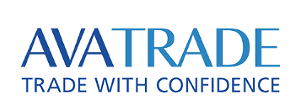Trading on the cryptocurrency exchange is reduced to placing one’s own and satisfying other people’s applications (orders) for the purchase/sale of cryptocurrency. At first glance, the process may seem simple, but there are many subtleties in trading itself. One of them is different types of trading orders.
What is a market order?
A market order is essentially the most basic form of a trader’s order and is an instruction to buy or sell cryptocurrencies at the best price currently available. If you go to TabTrader and want to buy something right now, you go to the seller with the best price available and make a deal. Common among beginners, this type of order is often considered the easiest. It can be handy when you just want to quickly enter or exit a position with sufficient liquidity. 
Such an order sets a particular price at which a trader wants to buy or sell an asset. The order is executed only if the market cost of the asset reaches the level specified by the trader. While market orders are executed immediately, limit orders are executed at a predetermined price, which is usually better than the existing market price.
What is a stop order (stop loss)?
Stop orders are similar to limit orders, but with some distinctions. A trader’s limit order is placed instantly and executed after getting a certain price. A stop order is set only when a specific price is achieved. It can be used in co-occurrence with a market or limit order. With the help of a stop order, you can set a pending execution of a market or limit order, which gives the trader flexibility in trading.
What is a scalable order?
Scaled orders use multiple limit orders to gradually buy or sell. This can help to average out the impact of market fluctuations over time, as well as mitigate the effect of a large order. Sometimes a trader wants to make several small trades at different prices. There may be several reasons for this, one of which is averaging, that is, buying an asset from time to time on the wave of its growth or fall. Averaging is often used as a strategy to minimize risk while maintaining optimal returns. 
The last type of parameters that can be built into the order logic is the “post-only” option. It allows you to make sure that the order is placed if and only if it cannot be immediately executed. If a buy (or sell) order immediately matches an opposite order, a trade occurs. In many cases, a trader does not want to place an order if it is immediately satisfied by another market participant, i.e. the trader wants to avoid paying fees when placing limit orders.
Generally speaking, on exchanges, limit orders will be subject to significantly lower fees than when placing market orders, since they provide liquidity. So the conclusion is obvious: cryptocurrency traders have enough tools to work in the market. Beginning players should get to know them properly before starting to use them.
- Broker
- Min Deposit
- Score
- Visit Broker
- Award-winning Cryptocurrency trading platform
- $100 minimum deposit,
- FCA & Cysec regulated
- 20% welcome bonus of upto $10,000
- Minimum deposit $100
- Verify your account before the bonus is credited
- Fund Moneta Markets account with a minimum of $250
- Opt in using the form to claim your 50% deposit bonus
Learn to Trade
Never Miss A Trade Again

Signal Notification
Real-time signal notifications whenever a signal is opened, closes or Updated

Get Alerts
Immediate alerts to your email and mobile phone.

Entry Price Levels
Entry price level for every signal Just choose one of our Top Brokers in the list above to get all this free.



